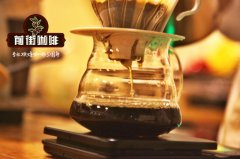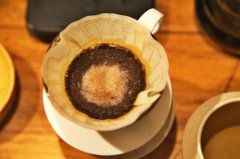Information introduction of Yega Xuefei Coffee Wanago Weinaguo Town Cooperative Omerdu Omado processing Plant

Professional coffee knowledge exchange more coffee bean information please follow the coffee workshop (Wechat official account cafe_style)
Origin: Ethiopia
Name of the manor: Omado treatment plant Q1, Wanago town, Yega Fei, Ethiopia
Treatment: insolation
Bean seed: 100% Arabica ancient excellent original species
Flavor: strawberry biscuit pineapple tea is sour, bright and long
Baking degree: shallow baking
Packing method: coffee beans half pound (230g / pack) ➡ one-way exhaust valve + Kraft paper bag fresh-keeping clip chain vertical bag
Altitude: 1750-2000m
Shelf life: please see packing for details
This batch is rated as Q1 by the Ethiopian Commodity Exchange (ECX) Cup, which is the highest grade in the G1 grade!
G1 and G2 with ➡ score above 85 are Q1 grade.
The scores of G1, G2 and G3 of ➡ 80Mel 85 were Q2 grade.
Coffee flavor
Various nutrients from raw coffee beans are thermally degraded into various odor molecular structures under baking, producing flavors similar to those of various aromas. Good coffee beans are naturally rich in aroma, and in high temperature, medium temperature, low temperature, there will be a variety of natural aroma changes, very pleasant, worthy of careful taste.
Q1 solarization at Omado treatment Plant, Wanago Town, Yega Feihuanago, Ethiopia
Ethiopia Yirgacheffe Wanago Omerdu Q1 Natural
Strawberry biscuit pineapple tea has a bright acid value and a long finish.
The town of Wanago in Ethiopia (Ethiopia) is located in the south, about 5 kilometers south of the town of Yegashefi. The Venaguo town cooperative is jointly produced by more than 700 local small coffee farmers. Due to the large number of cooperatives near the wall, the coffee batches produced in this small producing area have always had an amazing performance. Carefully select fully ripe coffee cherries, carefully pick out defective beans in the process of scaffolding, improve flavor cleanliness and consistency, and ensure that each batch is of the best quality.
This batch is rated as Q1 by the Ethiopian Commodity Exchange (ECX) Cup, which is the highest grade in the G1 grade!
G1 and G2 with ➡ score above 85 are Q1 grade.
G1, G2 and G3 with ➡ scores of 80 to 85 are Q2 grades.
Arabica coffee originates from Ethiopia in Africa. Up to now, there are hundreds or thousands of wild coffee species in Ethiopia, even growing in primeval forests all the year round. There are no number of native varieties that have been mixed, mutated and hybridized in the ground. This local hybrid is called Arabica gene pool, and the native species produced in Ethiopia is called ancient superior native species (Heirloom).
Treatment method (Coffee Processes)
It refers to the process of turning ripe red fruits into dried raw beans. Each treatment method has its own advantages and disadvantages, and is affected by the natural environment and demand of the producing area, so each producing area has its own suitable treatment method. This batch is solarization treatment.
Pull format solarization (Lager Yeast Natural), which is different from the traditional solarization method, adopts the method which is most suitable for the local climate environment. During the non-exposure period (night), the coffee fruit is collected in a clean plastic bucket for pull-form fermentation. In the process of low temperature fermentation at night, the resulting Lager yeast can better transform the sugar in ripened coffee beans, forming a charming aroma of flowers and fruit. The aroma is as delicate as the aroma of craft wine and the taste is clean. The process of continuous exposure and fermentation until the set moisture content of raw beans is reached. This way of treatment can also effectively reduce the defect rate.
Important Notice :
前街咖啡 FrontStreet Coffee has moved to new addredd:
FrontStreet Coffee Address: 315,Donghua East Road,GuangZhou
Tel:020 38364473
- Prev

What are the characteristics of the Burka Silinga processing plant for coffee brewing information in Yega Xilinga Village?
Professional coffee knowledge exchange more coffee bean information please follow the coffee workshop (Wechat official account cafe_style) Ethiopia Yega Xuefei Silinga Village G1 washing Ethiopia Yirgacheffe Gelena Abaya Silinga G1 Washed producing country / Origin: Ethiopia Ethiopia production area / Region: Yirgacheffe Yega Xuefei treatment Plant / mill
- Next

Kochere Kochere Boji Kebele Poli Israel Degfa
Professional coffee knowledge exchange More coffee bean information Please pay attention to coffee workshop (Weixin Official Accounts cafe_style) Ye Jia Xuefei washing Kocher Town Poli Village coffee beans half a pound a rich and varied washing Ye Jia Xuefei! Elegant floral blend vanilla tonality, sugar cane sweet entrance, with kumquat, lemon peel, fruit acid complex vitality!▲ Production information: Country:
Related
- Detailed explanation of Jadeite planting Land in Panamanian Jadeite Manor introduction to the grading system of Jadeite competitive bidding, Red bid, Green bid and Rose Summer
- Story of Coffee planting in Brenka region of Costa Rica Stonehenge Manor anaerobic heavy honey treatment of flavor mouth
- What's on the barrel of Blue Mountain Coffee beans?
- Can American coffee also pull flowers? How to use hot American style to pull out a good-looking pattern?
- Can you make a cold extract with coffee beans? What is the right proportion for cold-extracted coffee formula?
- Indonesian PWN Gold Mandrine Coffee Origin Features Flavor How to Chong? Mandolin coffee is American.
- A brief introduction to the flavor characteristics of Brazilian yellow bourbon coffee beans
- What is the effect of different water quality on the flavor of cold-extracted coffee? What kind of water is best for brewing coffee?
- Why do you think of Rose Summer whenever you mention Panamanian coffee?
- Introduction to the characteristics of authentic blue mountain coffee bean producing areas? What is the CIB Coffee Authority in Jamaica?

